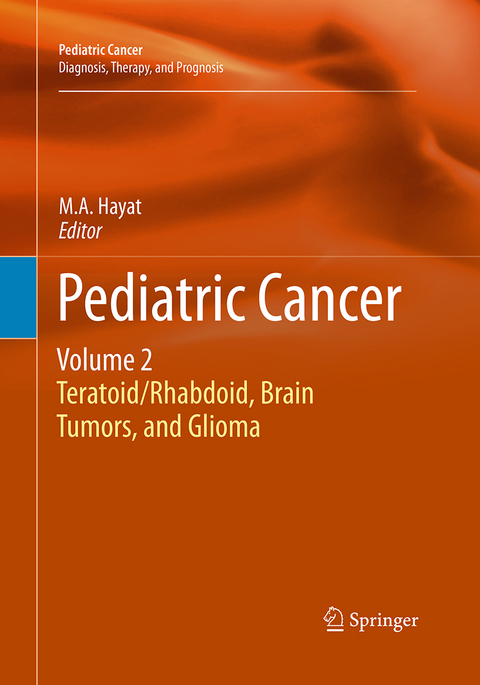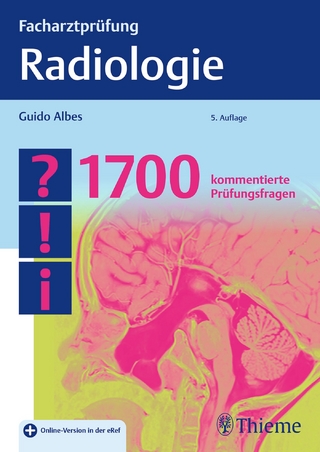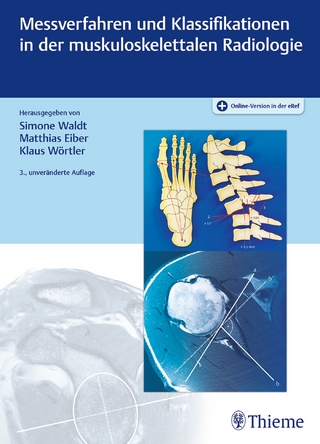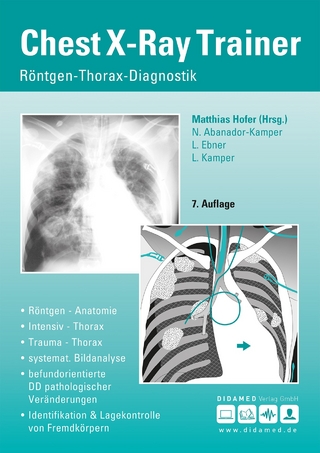
Pediatric Cancer, Volume 2
Springer (Verlag)
978-94-024-0593-4 (ISBN)
A general introduction to the principles of diagnosis and treatment of children with brain tumors is presented. Molecular characterization of solid tumors is also presented. Molecular pathways provide putative targets for new therapies. High resolution magic spinning NMR spectroscopy is explained, which is used to determine metabolic profiles for small pieces of intact tissue and whole cells in culture. The differences between adult and pediatric brain tumors are outlined. It is emphasized that pediatric low-grade gliomas need lower doses of antidrugs such as cisplatin/etoposide. It is explained that tumor suppressor genes and oncogenes play a crucial role in the development and progression of human malignancies, including those in children. Neurofibromatosis type-1 is a common genetic disorder with a high prevalence in CNS abnormalities including tumors in children; which is discussed in detail. Various neuroradiological imaging modalities in children with leukemia are detailed. Also are detailed results of clinical trials in pediatric brain tumors, such as medulloblastoma, ependymoma, craniopharyngioma, low-grade glioma, high-grade glioma, brainstem glioma, and germ cell tumors, using radiotherapy. Considering the clinical importance of epilepsy in the primary brain tumors in children, its symptoms, diagnosis, and treatments (surgery and antiepileptic drugs) are discussed.
Part I Teratoid/Rhabdoid.- 1. Pediatric Atypical Teratoid/Rhabdoid Tumors (An Overview).- 2. Pediatric Atypical Teratoid/Rhabdoid Tumor .- 3. Pediatric Rhabdomyosarcoma: Role Of Cell Cycle Regulators Alteration.- 4. Pediatric Atypical Teratoid/Rhabdoid Tumors: Imaging With Ct And Mri.- 5. Pediatric Atypical Teratoid/Rhabdoid Tumor: Diagnosis Using Imaging Techniques And Histopathology.- 6. Pediatric Atypical Teratoid/Rhabdoid Tumors: Differential Diagnosis.- Part II Brain Tumors (General).- 7. Pediatric Brain Tumors (An Overview).- 8. Pediatric Cns Primitive Neuroectodermal Tumor: Role Of The Wnt Pathway.- 9. Neuroblastic Tumors: Status And Role Of Her Family Receptors.- 10. Children With Neurofibromatosis Type 1: Positron Emission Tomography.- 11. Metabolite Profile Differences In Childhood Brain Tumors: 1h Magic Angle Spinning Nmr Spectroscopy.- 12. Central Nervous System Imaging In Childhood Leukemia.- 13. Immunohistochemistry In The Differential Diagnosis Of Adult And Pediatric Brain Tumors.- 14. Children With Brain Tumors: Role Of The Neurosurgeon.- 15. Pediatric Intraventricular Brain Tumors: Endoscopic Neurosurgical Techniques.- 16. Neurosurgical Management Of Pediatric Brain Tumors.- 17. Pediatric Brain Tumor Biopsy Or Resection: Use Of Postoperative Nonnarcotic Analgesic Medication.- 18. Clinical Trials In Pediatric Brain Tumors; Radiotherapy.- 19. Epileptic Seizures And Supratentorial Brain Tumors In Children.- 20. Postoperative Pain In Children: Advantage Of Using Nonnarcotic Analgesic Regimen.- 21. Pediatric Brain Tumors: Application Of Stratification Criteria To RefinePatient Management.- 22. Pediatric Supratentorial Primitive Neuroectodermal Tumor: Treatment With Chemotherapy And Radiation.- 23. Pediatric Cancer Survivors: Neurocognitive Late Effects.- 24. Adult Survivors Of Pediatric Cancer: Risk Of Cardiovacular Disease.- Part III Gliomas.- 25. Pediatric Glioma: Role Of Platelet-Derived Growth Factor Receptor.- 26. An Overview Of Pediatric High-Grade Gliomas And Diffuse Intrinsic Pontine Gliomas.- 27. Pediatric Low-Grade Glioma: The Role Of Neurofibromatosis-1 In Guiding Therapy.- 28. Treatment Of Pediatric Optic-Hypothalamic Gliomas: Prognosis.- 29. Pediatric Low-Grade Gliomas: Advantage Of Using Lower Doses Of Cisplatin/Etoposide.- 30. Pediatric Paragangliomas: Role Of Germline Mutation In Succinate Dehydrogenase.
| Erscheinungsdatum | 18.08.2022 |
|---|---|
| Reihe/Serie | Pediatric Cancer ; 2 |
| Zusatzinfo | XXII, 352 p. |
| Verlagsort | Dordrecht |
| Sprache | englisch |
| Maße | 178 x 254 mm |
| Themenwelt | Medizin / Pharmazie ► Medizinische Fachgebiete ► Chirurgie |
| Medizin / Pharmazie ► Medizinische Fachgebiete ► Onkologie | |
| Medizin / Pharmazie ► Medizinische Fachgebiete ► Pädiatrie | |
| Medizinische Fachgebiete ► Radiologie / Bildgebende Verfahren ► Radiologie | |
| Medizin / Pharmazie ► Studium | |
| Schlagworte | Cancer • Oncogenes • Pediatric • Tumors in children • Tumor treatment |
| ISBN-10 | 94-024-0593-3 / 9402405933 |
| ISBN-13 | 978-94-024-0593-4 / 9789402405934 |
| Zustand | Neuware |
| Haben Sie eine Frage zum Produkt? |
aus dem Bereich


